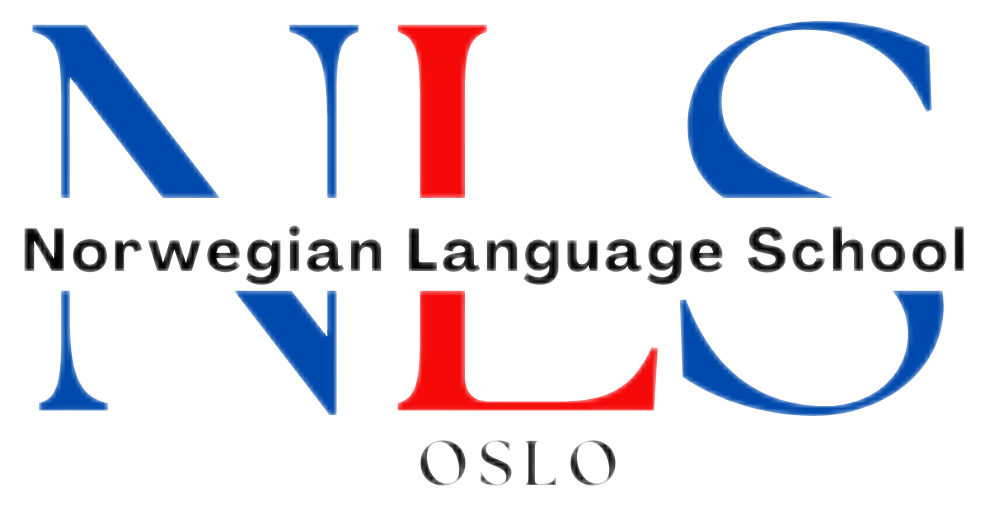

Beyond Fluency: The Strategic Advantage of High-Level Business English in the 2025 Global Market
As we navigate the complexities of the 2025 global economy, the rules of professional engagement have been fundamentally rewritten. In a world characterized by rapid technological change, geopolitical shifts, and the enduring reality of hybrid work models, simple communication is no longer sufficient. For professionals in international hubs like Oslo—a city at the forefront of global industries like renewable energy, maritime technology, and digital innovation—the ability to communicate in English is a given. The new benchmark for success, however, is not mere fluency. It is the mastery of Strategic Business English: the ability to use language not just to inform, but to influence, persuade, lead, and drive tangible business outcomes.
This article moves beyond the basics to explore how high-level Business English functions as a critical strategic asset. We will dissect the evolution of professional communication in the post-digital age, conduct a deep dive into the high-stakes arenas where linguistic mastery truly counts, and lay out a roadmap for transforming your language skills from a passive tool into a powerful engine for career advancement. In today’s competitive landscape, those who wield language with strategic intent are the ones who will lead, innovate, and thrive.
Table of Contents
ToggleRedefining Business English for the Post-Digital Age
The term “Business English” has evolved significantly. A decade ago, it might have primarily evoked images of formal letter writing and specific industry jargon. Today, its scope is far broader and more nuanced, shaped by the pervasive influence of technology and new work paradigms.
Communication in a Hybrid World
The widespread adoption of remote and hybrid work has placed unprecedented emphasis on written communication. Platforms like Slack, Microsoft Teams, and email are now the primary channels for team collaboration, project management, and client interaction. In this environment, ambiguity is a critical liability. The ability to write with absolute clarity, conciseness, and the appropriate tone is paramount. A poorly worded message can lead to misunderstandings that derail projects, while a well-crafted digital communication can align teams and build client confidence across continents. Strategic Business English in this context means understanding how to convey nuance, empathy, and authority without the benefit of face-to-face cues.
The Human Element in an AI-Driven World
The rise of sophisticated AI tools, from advanced translators to grammar-checking software, has led some to question the need for deep language learning. While these tools are incredibly useful for correcting errors and improving basic fluency, they cannot replicate the uniquely human elements of strategic communication. AI cannot yet master the art of persuasion, build genuine rapport, navigate complex cultural sensitivities, or deploy humour and empathy to resolve a tense situation. In fact, as AI handles more of the mundane tasks, the premium on these high-level human communication skills—expressed through masterful language—has only increased. The true professional differentiator in 2025 is not perfect grammar (which AI can assist with), but the strategic application of language that an AI cannot emulate.
The High-Stakes Arenas of Business English Mastery
True command of Business English is most visible when the stakes are highest. It is in these critical moments that language proficiency transforms into strategic influence. Let’s explore these arenas in depth.
1. The Art of Persuasion: Crafting Winning Proposals and Pitches
Every proposal, sales pitch, or funding request is an exercise in persuasion. The goal is to move your audience from skepticism to belief, and ultimately, to action. This requires more than just listing facts and figures; it requires building a compelling narrative.
- Structuring the Narrative: Effective persuasive documents often follow a narrative structure. You begin by presenting a problem or an opportunity that resonates with the audience’s needs (the “inciting incident”). You then introduce your solution, product, or idea as the hero of the story, clearly demonstrating how it resolves the central conflict. Finally, you paint a vivid picture of the successful outcome—the “new reality” the client will enjoy after adopting your proposal.
- The Vocabulary of Value: Strategic word choice is critical. Instead of saying a software is “good,” you might use more powerful, benefit-oriented language, describing it as “robust,” “scalable,” “secure,” or “intuitive.” Focus on verbs that imply action and positive results (“accelerate growth,” “streamline operations,” “mitigate risk,” “unlock potential”).
- Addressing the ‘Why’: The most persuasive communicators don’t just explain what they are offering; they powerfully articulate why it matters. This involves connecting the features of a product or service to the fundamental needs and desires of the client: security, growth, efficiency, or competitive advantage. The language must bridge this gap clearly and convincingly.
2. The Language of Leadership: Inspiring Teams and Managing Stakeholders
Leadership is inextricably linked to communication. A leader uses language to translate vision into reality, motivate teams through challenges, and align diverse stakeholders around a common goal.
- Communicating Vision: A leader must be able to articulate the company’s vision in a way that is both inspiring and understandable. This involves using metaphors, storytelling, and clear, powerful language to paint a picture of the future that makes people want to be a part of it. Compare “Our goal is to increase market share” with “Our mission is to become the undisputed leader that our customers trust and our competitors strive to emulate.”
- Giving Constructive Feedback: The difference between feedback that crushes morale and feedback that inspires growth lies entirely in the delivery. Strategic language involves using “I” statements (“I noticed that the report could be strengthened by adding more data…”) instead of accusatory “you” statements. It involves sandwiching criticism between positive observations and focusing on future behaviour rather than past mistakes.
- Managing Difficult Conversations: Whether resolving team conflicts or delivering bad news to a client, leaders must choose their words with surgical precision. This involves using empathetic language (“I understand this is frustrating…”), taking ownership (“We recognize there was a shortfall on our end…”), and shifting the focus towards solutions (“Here is our plan to address this immediately…”).
3. High-Stakes Negotiations: The Linguistics of Deal-Making
In a negotiation, language is the primary currency. Every phrase is a move and a counter-move in a complex dance towards a mutually acceptable agreement.
- Hedging vs. Assertiveness: Knowing when to use hedging language (e.g., “It seems that the current valuation might be a little high”) versus assertive language (e.g., “Our position is that the valuation must reflect Q2 performance”) is a key skill. Hedging language can be used to test the waters without committing, while assertive language is used to state a firm position.
- The Power of Paraphrasing: A powerful negotiation technique is to listen carefully to the other party and then paraphrase their position back to them (“So, if I’m understanding correctly, your primary concern is the delivery timeline, rather than the unit cost?”). This not only confirms understanding but subtly puts you in control of the conversation’s frame.
- Conditional Statements: The “if…then” construction is the workhorse of negotiation. “If you can agree to a three-year contract, then we can offer the premium support package at no extra cost.” This directly links concessions to gains, creating a clear framework for compromise.
Developing Your Personalised Roadmap to Mastery
Achieving this level of strategic command over Business English requires a deliberate and personalised plan.
Step 1: The Diagnostic Phase
Before you can improve, you must understand your specific weaknesses. Record yourself in a mock presentation. Review your sent emails from the past month. Ask a trusted colleague for candid feedback. Are you overly passive in meetings? Is your writing unclear or verbose? Do you struggle to build rapport during networking? Identifying your specific gaps is the critical first step.
Step 2: The Deep Immersion Phase
Go beyond passive consumption. Engage with English business content actively. Don’t just read an article from The Economist; write a one-paragraph summary of its argument. Don’t just listen to a CEO’s speech; transcribe a key section and analyze their word choice and rhetorical strategies. This active engagement transforms content from something you consume into something you learn from.
Step 3: The Structured Acceleration Phase
Self-study can take you far, but it often leads to a plateau. To break through to the next level of proficiency, structured learning with expert feedback is essential. A formal course provides a dedicated environment to practice high-stakes skills, receive targeted corrections, and learn advanced strategies that are difficult to discover on your own. For those in the Oslo area seeking to accelerate their journey to mastery, a dedicated course can provide the necessary structure and expert feedback. The NLS Norwegian Language School offers a comprehensive Business English program designed for this purpose.
Professionals ready to move from passive knowledge to active, strategic application can find detailed course information and registration here: https://nlsnorwegian.no/business-english/.
The Oslo Advantage: Leveraging Your Skills in a Global City
Being in Oslo in 2025 provides a unique advantage for honing these skills. The city is a crucible of international business, where English is the daily language of commerce in sectors ranging from renewable energy and sustainable finance to maritime tech and software-as-a-service. This environment provides a living laboratory for practicing Business English. Every meeting with an international partner, every industry conference, and every email to a global supplier is an opportunity to refine your strategic communication.
To truly leverage the Oslo advantage, professionals can hone their skills with local experts who understand the city’s unique commercial landscape. A course designed with the local context in mind can prepare you for the specific communication challenges and opportunities you will face in the Norwegian and Nordic business ecosystems. The Business English course at NLS is tailored to empower individuals within this dynamic environment, connecting advanced language skills to the realities of the local and international market.
Explore the program designed to give you a competitive edge in Oslo’s global business community: https://nlsnorwegian.no/business-english/.
Conclusion: Evolving from Communicator to Strategic Influencer
The distinction between a proficient English speaker and a master of Strategic Business English is the difference between participating in the conversation and leading it. In the fiercely competitive global market of 2025, the ability to use language as a tool of influence is no longer a soft skill—it is a core strategic competency.
Mastery empowers you to transform complex data into a compelling story, to turn a tense negotiation into a successful partnership, and to mould a group of individuals into an inspired, high-performing team. It is an investment in your ability to shape outcomes and drive your career forward on the international stage. The journey requires self-awareness, deep immersion, and the guidance of experts.
The time to invest in your most powerful professional tool is now. Take the final step from proficiency to strategic mastery.
Register for the Business English course at the NLS Norwegian Language School and redefine your career potential: https://nlsnorwegian.no/business-english/.
If you want to learn Norwegian, you can register for classes here. We look forward to hearing from you and helping you become fluent in Norwegian.





